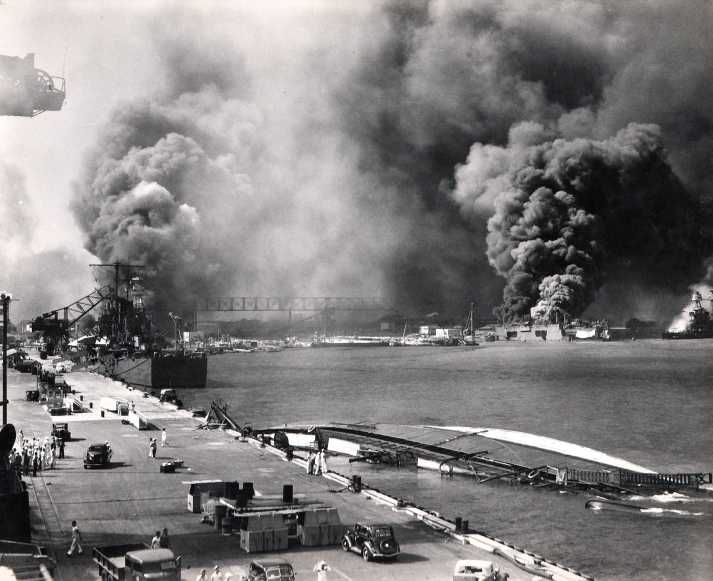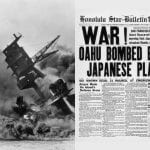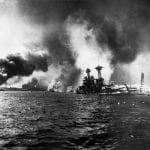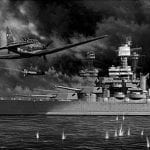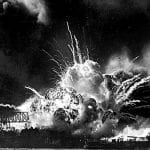The attack on Pearl Harbor was a brief affair, lasting only a couple of hours, but it stunned America, which did not expect such advanced naval and aviation strategy from the Japanese military. The attack led to America’s involvement in World War Two and immediately triggered calls for massive wartime production.
Date
7th December 1941
Location
Pearl Harbor, Hawaii
War
World War Two
Combatants
Japan VS United States
Outcome
Japanese victory
At 6:00 a.m. Hawaii time on Sunday, December 7, 1941, six Imperial Navy aircraft carriers steamed into gray, spume-swept Pacific swells. The ships steadied up directly into the wind and began launching aircraft with a precision born of arduous training.
With practiced skill 183 planes assembled by aircraft type—forty Nakajima B5N torpedo planes, forty-nine B5N level bombers, fiftyone Aichi D3A dive bombers, and forty-three Mitsubishi A6M Zero fighters. Pearl Harbor lay 230 statute miles south. Meanwhile, a scout from the cruiser Chikuma snooped the harbor, radioing that the Americans seemed unwary.
The first wave was timed to arrive over Pearl about thirty minutes after Japanese diplomats delivered Japan’s refusal to accept Washington’s demands. But the message from Tokyo took too long to decode, so the mission proceeded as a surprise. The attack on Pearl Harbor precipitated boiling anger throughout America, fueling a surging rage that never abated until V-J Day.
While the leading squadrons winged southward, Kido Butai continued as briefed. At 7:15 the second wave of 168 planes lifted off its decks, comprising fifty-four level bombers, seventy-eight dive bombers, and thirty-six fighters.
The first B5Ns over the target were sixteen from Soryu and Hiryu. Briefed to hit carriers on Ford Island’s northwest coast, they went for alternate objectives, destroying the target ship USS Utah (née BB-31, re-designated AG-16) and damaging a cruiser.
Akagi’s torpedo squadron led a devastating attack. The Nakajimas swept in from the north shore of the harbor, skimming low between Hickam Field and the fuel tank farm, then nudging downward over the water. Making one hundred mph at sixty-five feet, they deployed as per individual briefings and turned onto their attack headings. A quarter mile ahead lay the gray monoliths along Battleship Row.
Of thirty-six torpedoes dropped, probably nineteen found their targets. Hardest hit were West Virginia (BB-48) and Oklahoma (BB-37) moored outboard at the head of Battleship Row. California (BB-44), resting farther ahead of the others, drew further attention and took two hits and slowly settled onto the mud.
Five torpedo planes were shot down, all from succeeding waves as the defenders responded and fought back. After-action reports showed that most ships began returning fire within two to seven minutes.
At 8:40, almost half an hour after the first attack on Pearl Harbor, 167 aircraft of the second wave were led by Zuikaku’s senior aviator, Lieutenant Commander Shigekazu Shimazaki. No torpedo planes participated, but fifty-four Nakajima level bombers struck three air bases. The seventy-eight Aichi dive bombers were assigned any carriers in port with cruisers as secondary goals. Nearly three dozen Zero fighters established air superiority over Hickam and Bellows Fields plus Kaneohe Naval Air Station.
When the second wave departed northward, the entire attack had lasted not quite two hours, from 7:55 to 9:45. In their slipstream the Japanese left Oahu stunned, both physically and emotionally.
The attack on Pearl Harbor killed 2,335 U.S. military personnel and 68 civilians.
Arizona was destroyed and Oklahoma written off. Pennsylvania and Maryland were lightly damaged and quickly returned to service, but saw no action until 1943. Tennessee and Nevada were refitted in 1942 and ’43; California and West Virginia were refloated and fully repaired in 1944. Three cruisers and three destroyers were repaired or rebuilt from 1942 to 1944. Finally, a minelayer was sunk but repaired and operational in 1944.
Combined Army-Navy-Marine aircraft losses were about 175 immediately assessed as destroyed plus twenty-five damaged beyond repair. Some 150 sustained lesser damage.
The Japanese lost twenty-nine aircraft and sixty-five men, mostly aircrew, but including ten sailors in five miniature submarines.
This article is part of our larger selection of posts about the Pearl Harbor attack. To learn more, click here for our comprehensive guide to Pearl Harbor.
Cite This Article
"Attack on Pearl Harbor" History on the Net© 2000-2024, Salem Media.
April 19, 2024 <https://www.historyonthenet.com/attack-on-pearl-harbor>
More Citation Information.



